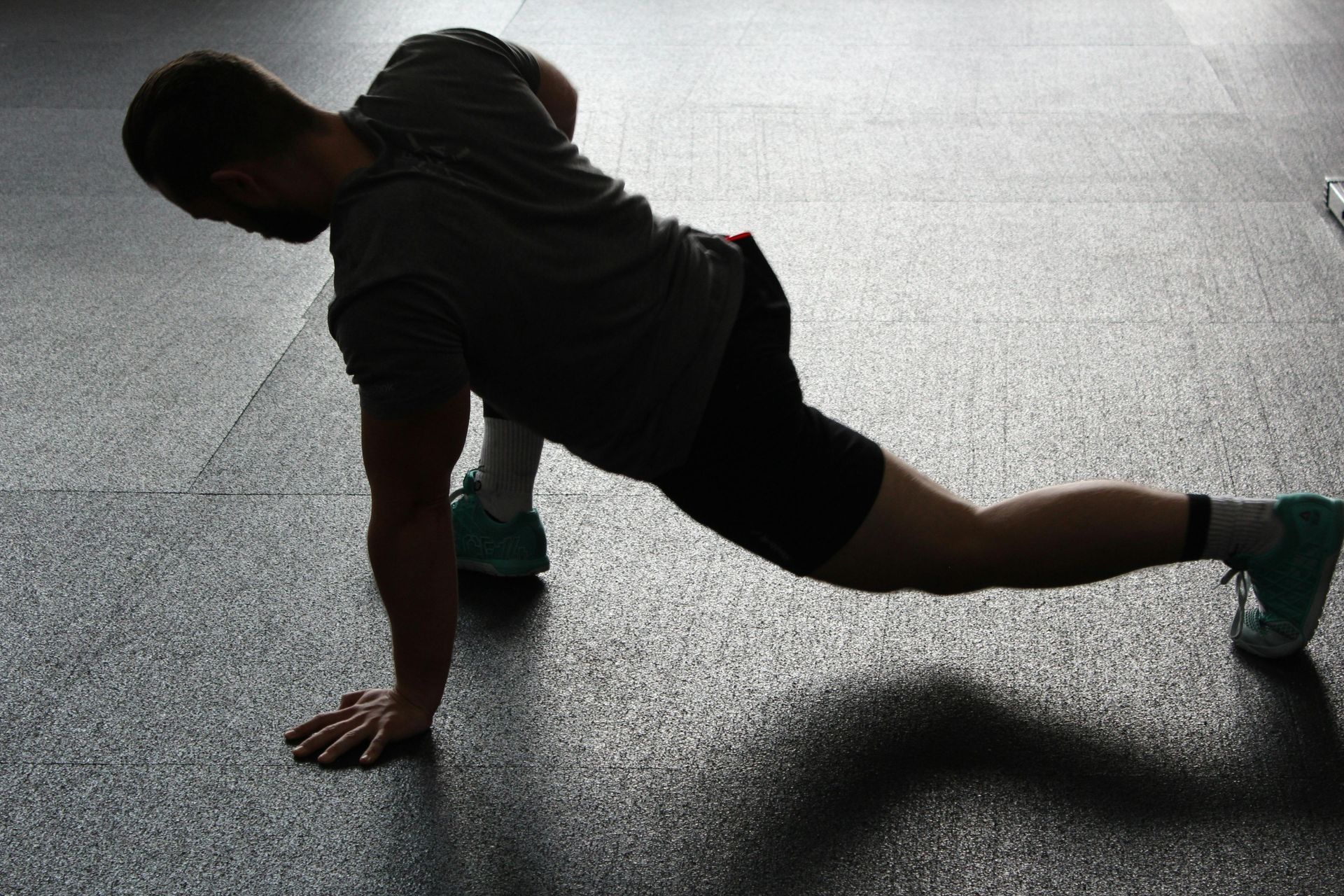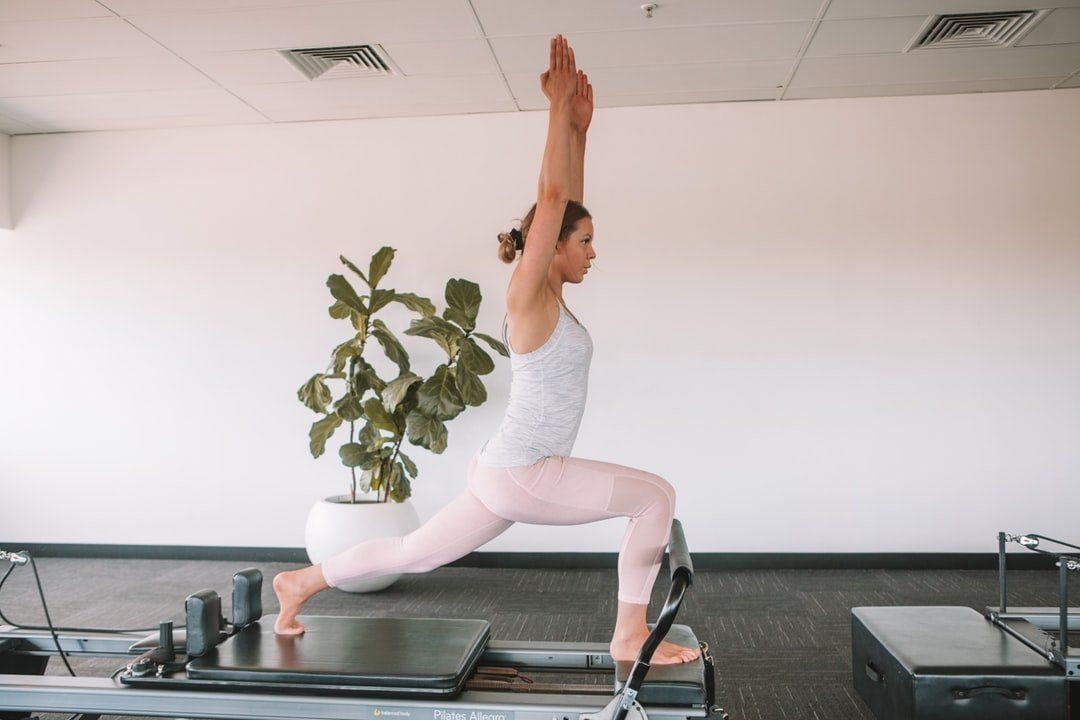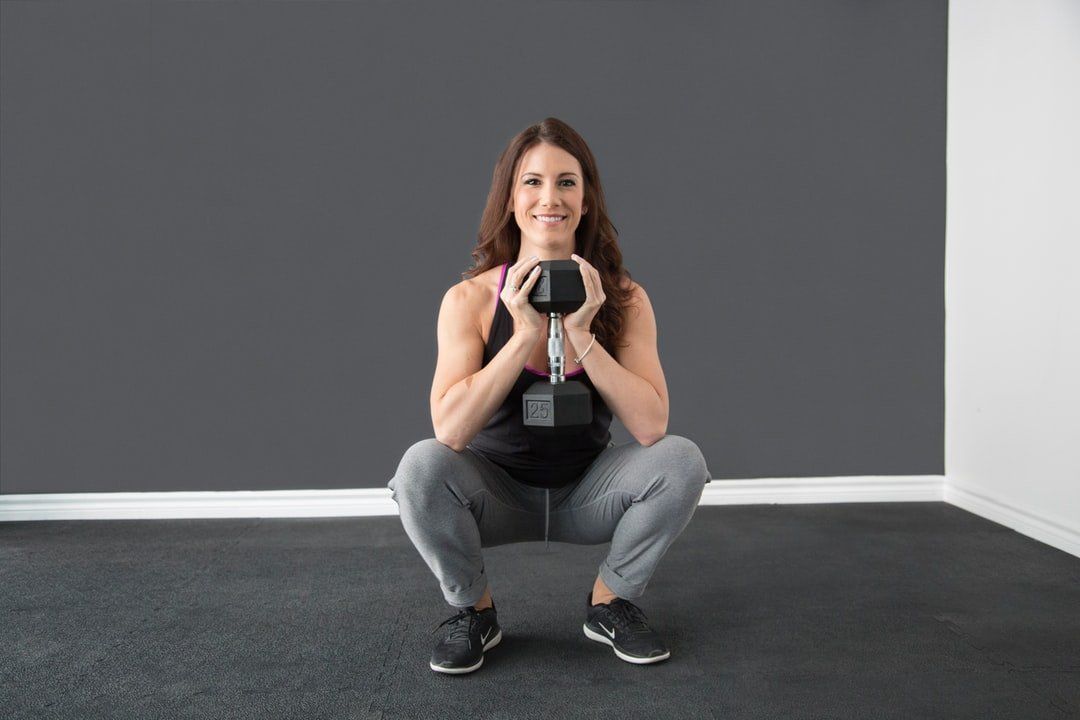Mindfulness and Exercise
A synergy

In an earlier post titled “6 Psychological Benefits of Exercise”, I briefly discussed how increased mindfulness is one of the mechanisms behind the positive impacts exercise can have on one’s psychological well-being. I also mentioned that the relationship between mindfulness and exercise is a subject of growing interest in the scientific literature.
But before going into the science behind said relationship, I would like to be clear on what I mean when I talk about mindfulness. Once that has been clarified, I will summarize some of what the scientific literature has to say and then I will discuss some mindfulness practices that trainees can incorporate into their routines as well as share some final thoughts.
What is mindfulness?
Mindfulness, as defined by meditation expert Jon Kabat-Zinn, is "The awareness that emerges by way of paying attention on purpose, in the present moment, and non-judgmentally to the unfolding of experience moment by moment." In simpler terms, mindfulness involves intentionally focusing your awareness, bringing your attention to what is happening right now (rather than dwelling on the past or worrying about the future), observing your thoughts, feelings, and sensations without evaluating them as good or bad, right or wrong. Essentially, mindfulness is a way of relating to your experiences with openness, curiosity, and acceptance. It's about being fully present in your life and observing your thoughts and feelings as they come and go without getting carried away by them.
Developing greater mindfulness is a process that involves consistent practice and cultivating certain attitudes. There are formal and informal practices. Formal practices include sitting or walking meditation (of which there are several kinds; more on that later), and informal practices can include things like mindful eating, mindful listening, mindful communication, etc. Part of developing greater mindfulness can include cultivating mindful attitudes such as non-judging, patience, acceptance, letting go, etc. Three key principles for developing mindfulness are consistency, gentle persistence (gently redirecting one’s attention back to the chosen focus without judgment), and self-compassion.
What science suggests about mindfulness and exercise
The scientific literature shows that the relationship between mindfulness and exercise is multifaceted and synergistic–working together to promote both physical and mental well-being. This section is an exploration of this relationship.
Research suggests that combining mindfulness practices with exercise can lead to greater improvements in mental health outcomes compared to either intervention alone. A systematic literature review by Remskar and colleagues (2024) indicates that this combination may be particularly effective in reducing depression, anxiety, and stress. Mindfulness and exercise may have a shared mechanism (i.e., mindfulness-based self-efficacy) according to a 2018 paper by Goldstein and colleagues suggesting a complementary relationship. Both practices can influence neurobiological processes related to mood regulation, stress response, and cognitive function.
Mindfulness can help individuals become more present and attuned to the sensations of their body during exercise, potentially increasing enjoyment and intrinsic motivation. This can lead to greater adherence to exercise programs, though specific studies directly demonstrating this are limited. However, the Remskar and colleagues (2024) review suggests that combinging mindfulness with exercise can help motivate people start and stick with exercise by helping to overcome discomfort or feelings of failure. Mindfulness training can improve self-awareness and self-regulation skills, which can be beneficial in managing exercise intensity, preventing overexertion, and staying committed to fitness goals.
The Goldstein and colleagues (2018) paper indicates a reciprocal relationship where engaging in regular exercise can actually increase an individual's baseline levels of mindfulness. The focused attention required for certain types of exercise, especially those involving rhythmic movements, might contribute to this effect.
Exercise is known to reduce stress and improve mood. This improved mental state can make it easier for individuals to engage in mindfulness practices and experience their benefits (though direct evidence for this specific point is not strongly demonstrated in the scientific literature).
Practices like yoga and Tai Chi explicitly integrate mindfulness with physical movement. Research has shown these mindful movement approaches to be effective in improving cognitive and attentional skills, as well as psychological well-being. Mindful movement can enhance interoceptive awareness, which is the ability to sense internal bodily states. This heightened awareness can contribute to better self-regulation and emotional processing.
Studies suggest that mindfulness and exercise might influence similar biological pathways related to stress response and overall health. For example, both exercise and mindfulness have been shown to have positive effects on cardiovascular health.
One particularly interesting observation is that mindfulness practices can influence heart rate variability (HRV), which refers to the variation in the time interval between consecutive heartbeats. It is considered an indicator of the autonomic nervous system’s (ANS) ability to regulate bodily functions. A higher HRV generally reflects greater adaptability and resilience of the ANS, indicating a healthy balance between the sympathetic (“fight-or-flight”) and parasympathetic (“rest-and-digest”) branches of the ANS. Low HRV has been associated with various health issues, including cardiovascular diseases and increased stress.
Studies suggest that mindfulness practices, particularly meditation, can lead to an increase in parasympathetic nervous system activity, which is often reflected in higher HRV. This shift towards parasympathetic dominance is associated with relaxation, stress reduction, and improved emotional regulation. However, while many studies show a positive association, it should be noted that some research has yielded inconsistent results. For instance, a meta-analysis by Brown et al. (2021) found insufficient evidence to definitively conclude that mindfulness and meditation-based interventions consistently influence resting-state HRV compared to controls, which indicates a need for more rigorous and well-designed studies. So while the jury is still out regarding a definitive relationship, the data do seem promising.
In summary, the scientific literature supports a significant and positive relationship between mindfulness and exercise. Combining these practices appears to offer enhanced benefits for mental health, with mindfulness potentially improving the exercise experience and adherence, and exercise potentially fostering mindfulness. Mindful movement practices like yoga and Tai Chi exemplify this integration, demonstrating positive outcomes for both physical and psychological well-being. Further research continues to explore the precise mechanisms and optimal ways to integrate these two powerful tools for health and wellness.
More about mindfulness practices
While practicing mindfulness does not necessarily require formal meditation, it certainly does help to have a consistent meditation practice. What exactly is meditation? In the context of our discussion, meditation refers to specific practices or techniques that are often used to develop and cultivate mindfulness. It’s a method or a tool that helps train our attention and awareness to the present moment in a non-judgmental way.
Mindfulness is the quality of being aware and present in the moment without judgment. It’s a state of mind that can be cultivated and brought into any activity. Meditation is the practice you can engage in to strengthen your ability to be mindful. It is a deliberate exercise for training your attention and cultivating this quality of awareness. So while mindfulness is a broader concept–a way of being–meditation is a specific set of techniques that you use to develop and deepen your capacity for mindfulness. These are specific exercises (like focusing on the breath) that help you become more aware of your present moment experience, thereby fostering mindfulness. You can take that cultivated mindfulness into other areas of your life, like your exercise routine or daily interactions.
While there are several different forms of sitting and walking meditation, all with their own sets of specific goals and techniques, I will focus on three forms of sitting meditation: Samatha, Vipassana, and Zazen. I do so in the interest of brevity and being able to relate them to my own practice.
Samatha (tranquility or concentration) meditation: a core practice in many Buddhist traditions, Samatha's
primary goal is to develop a calm, focused, and stable mind. It involves training one’s attention to rest on a single object of focus, thereby reducing mental distraction and agitation. Its core principles include single-pointed concentration, reducing emotionally charged overthinking, and developing mental stability and calm.
The central principle is the sustained focus of attention on one specific
object, which could be the breath, a visual image, a sound, a mantra, or even a feeling. The practice also aims to quiet the restless mind–the constant stream of thoughts, worries, and fantasies that often dominate our awareness. By anchoring attention to a single point, Samatha helps to reduce this mental chatter. Through consistent practice, it leads to a state of deep relaxation, mental clarity, and emotional equilibrium. The mind becomes less reactive and more resilient.
In many Buddhist traditions, Samatha is seen as a
foundation for deeper meditative practices like Vipassana since a calm and focused mind is better equipped to explore the nature of reality.
Vipassana (insight) meditation: an
ancient Indian meditation technique that aims to develop profound
insight into the true nature of reality, Vipassana focuses on observing reality as it is,
without judgment or reaction, leading to a
deep understanding of impermanence, suffering (unsatisfactoriness), and non-self. Its core principles include direct observation, impermanence, suffering (unsatisfactoriness), non-self, and non-judgmental awareness.
The primary principle is the direct and experiential observation of sensations, thoughts, and emotions as they arise and pass away in the present moment. It also emphasizes the understanding that all phenomena are constantly changing and
impermanent. By observing the fleeting nature of experiences, one can develop detachment and reduce clinging. Through observation, Vipassana reveals the inherent unsatisfactoriness that arises from clinging to impermanent things. This understanding motivates the practitioner to seek liberation. It ultimately aims to provide insight into the lack of a permanent, independent self. By observing the continuous flow of sensation and mental events, one can realize that there is no fixed entity that constitutes a “self”.
Observation in Vipassana is done with a detached and non-reactive attitude. There’s no attempt to control, interpret, or judge the experiences; simply noticing them as they are.
Zazen (open-awareness) meditation: a Japanese word that translates as “seated meditation,”
Zazen is the central meditative practice of Zen Buddhism. It’s characterized by its emphasis on stillness, awareness of the present moment, and non-conceptual contemplation. While it shares similarities with other mindfulness practices, Zazen has its own distinct
style and goals. Its core principles include just sitting, awareness of the present moment, non-conceptual contemplation, and stillness of body and mind.
Just sitting is considered the
essence of Zazen. This is a widely held view, espeically within the Soto Zen tradition where "Shikantaza" (just sitting) is the primary practice. It means simply sitting, without any specific goal or object of focus. The practitioner doesn’t try to control thoughts, achieve a particular state, or analyze anything. They simply observe what arises and passes in their awareness. Like other mindfulness practices, it emphasizes bringing one’s full attention to the present moment. This includes being aware of bodily sensations, the breath, sounds, thoughts, and emotions as they occur. Zazen moves beyond intellectual understanding. It’s about experiencing reality directly, without the filter of thoughts, judgments, or interpretations. This direct experience is seen as the path to insight and awakening. Physical stillness is considered important as it can help to cultivate mental stillness. However, the idea is not to suppress thoughts but rather to observe them without getting carried away.
Applications of mindfulness
I can speak from my own experience that mindfulness and meditation offer a wealth of practical applications that can significantly enhance our engagement with daily activities, including exercise. By bringing focused awareness and non-judgmental observation to what we are doing, we can cultivate a deeper connection to our experiences and reap numerous benefits. Such daily activities can include mindful eating, mindful walking/commuting, mindful listening, mindful working, mindful chores, etc. However, since this post is about the relationship between mindfulness and exercise, the focus will be on practical applications of mindfulness to exercise.
Mindfulness and meditation techniques can be integrated into exercise in various ways, leading to improved motivation, focus, performance, and recovery. Before exercise, one can mindfully set intentions. Before starting your workout, take a moment to reflect on your intentions. Instead of focusing solely on outcomes (e.g., building muscle or getting stronger), consider process-oriented intentions like “I intend to move my body with awareness and enjoy the feeling of strength.”
Pay close attention to the sensations in your body as you warm up. Remember that the goal of the warm-up is to prepare the body for the workout that is about to happen. It is a great opportunity to gauge how recovered you feel, work on skill and technique so as to minimize the risk of injury, develop the motivation needed to perform at your best, and so on. Notice the stretching and movement in different muscle groups, preparing your body with awareness rather than merely going through the motions. Before the warm-up (or between sets), a short breath awareness or body scan meditation can help center your mind, reduce pre-workout anxiety, and enhance focus.
While exercising, continuously bring your attention to the physical sensations in your body as you exercise. Notice the contraction and relaxation of muscles, the rhythm of your breathing, your heart rate, and any feelings of fatigue or effort. Use your breath as an anchor for your attention. Pay attention to the inhale and exhale, allowing it to guide your pace and intensity. This can be particularly helpful during endurance activities like running or swimming. When you encounter fatigue or discomfort, observe these sensations without judgment or resistance. Notice their intensity and how they change over time, rather than immediately trying to push through or give up. This can help you better understand your body’s limits and avoid injury.
After exercise, pay attention to the sensations in your muscles as you cool down and stretch. Notice the release of tension and the feeling of increased flexibility. A post-exercise body scan can help you become aware of any areas of soreness or tension, promoting mindful recovery and self-care. Take a moment to appreciate your body for its ability to move and the effort you put into your exercise. This can cultivate a more positive relationship with physical activity.
To get a better idea of what this looks like, I will offer a description of my experiences with exercise and mindfulness. One thing I do is pick a time of the day to devote towards sitting meditation. It is often recommended that you do it right after waking up, but I find that my meditations run more smoothly after I have had something to eat. After eating and drinking some coffee, sit on my meditation cushion and go through a progression of Samatha for 10-20 minutes, Vipassana for 10-20 minutes, and then finish with Zazen for 10 minutes, which suits me as a more experienced meditator.
Please note that your mileage may vary. You can start with a daily 5-10 minute Samatha meditation and work up from there. It really just depends on your current needs, goals, and what your schedule and other constraints will allow. The most important thing, as with exercise, is consistency.
Depending on the day, I either lift for about 30-60 minutes or I swim for roughly the same amount of time. Before starting, I make an intention for the workout keeping in mind my bigger-picture goals, which for me include becoming the best version of myself which does involve developing greater health, but also insight, awakening, and compassion so as to improve the lives of those around me in whatever ways I can. I remind myself that suffering is ubiquitous and that exercising will not only help me decrease it for myself, but also put me in a position to decrease it for others. It’s especially effective when I make others my primary focus over myself.
If I am lifting, I tend to pay attention mostly to my range of motion, my form, my perceptions of exertion and fatigue. I tend to switch my object of focus to how rested I feel before the end of my rest period. If I am swimming, I pay especially close attention to my breath as well as feelings of exertion and fatigue. When I am recovering between intervals, I don't just pay attention to my breathing depth and rate, but also my HRV and relative stroke volume (amount of blood pumped by the heart with each beat) to gain a greater sense of how I am responding to what I am doing in the water and plan progressions for my future workouts. After either lifting or swimming, I tend to pay close attention to my general mood, thoughts, and feelings to notice the impact it has on my psychological well-being (which informs my intentions which inform my words and actions) as well as how it supports my overall mindfulness practices.
Conclusion
Ultimately, the integration of mindfulness and exercise isn't about achieving a perfect state during workouts or meditation sessions. It's about cultivating a richer, more embodied awareness of the present moment, whether you're pushing through a challenging set, finding your rhythm in a swim, or simply sitting in stillness. By intentionally weaving these practices together, you unlock a powerful synergy that can enhance not only your physical capabilities but also your mental clarity, emotional resilience, and overall well-being, leading to a more engaged and meaningful experience of life itself.
This is something I can personally attest to as it has been true of my own experience. Not only do I benefit from enhanced mental and physical health, I have a deeper and richer experience of the world that enables me to experience insight amongst confusion, peace amongst chaos, beauty amongst ugliness, optimism amongst pessimism, compassion amongst cruelty, and love amongst hate. This is especially important in a modern day world that has been increasingly choosing the latter terms over the former of those dualisms I listed. As such, I have the following wishes: May we all be well. May we all be happy. May we all be free from suffering.
Key takeaways
Here are the key takeaways from this post:
- Mindfulness is present moment awareness without judgment. It involves intentionally focusing on the now and observing experiences with openness and acceptance.
- Developing mindfulness requires consistent practice and cultivating attitudes like non-judging, patience, and self-compassion. Formal practices like meditation and informal practices in daily life are both important.
- Science suggests a synergistic relationship between mindfulness and exercise. Combining them can lead to greater improvements in mental health, particularly in reducing depression, anxiety, and stress.
- Mindfulness can enhance the exercise experience by increasing enjoyment, motivation, body awareness, and adherence to programs. It can also improve self-regulation during workouts.
- Exercise may foster mindfulness through the focused attention required in some activities.
- Mindful movement practices like yoga and Tai Chi effectively improve both cognitive skills and psychological well-being by integrating mindfulness with physical activity and enhancing interoceptive awareness.
- Mindfulness practices may positively influence heart rate variability (HRV), an indicator of autonomic nervous system regulation, though more research is needed for definitive conclusions.
- Meditation is a practice to cultivate mindfulness. While mindfulness is a state of being, meditation is a tool to train attention and awareness as a means of cultivating mindfulness.
- Different forms of sitting meditation exist, including Samatha (concentration), Vipassana (insight), and Zazen (open-awareness), each with unique principles and goals.
- Mindfulness can be practically applied to exercise by setting mindful intentions, paying attention to bodily sensations during warm-up and the workout itself, using breath as an anchor, observing fatigue without judgment, and being aware during cool-down and recovery.
- Personal experience highlights the benefits of integrating mindfulness and exercise, leading to enhanced mental and physical health and a richer life experience. Consistency is key for both practices.











